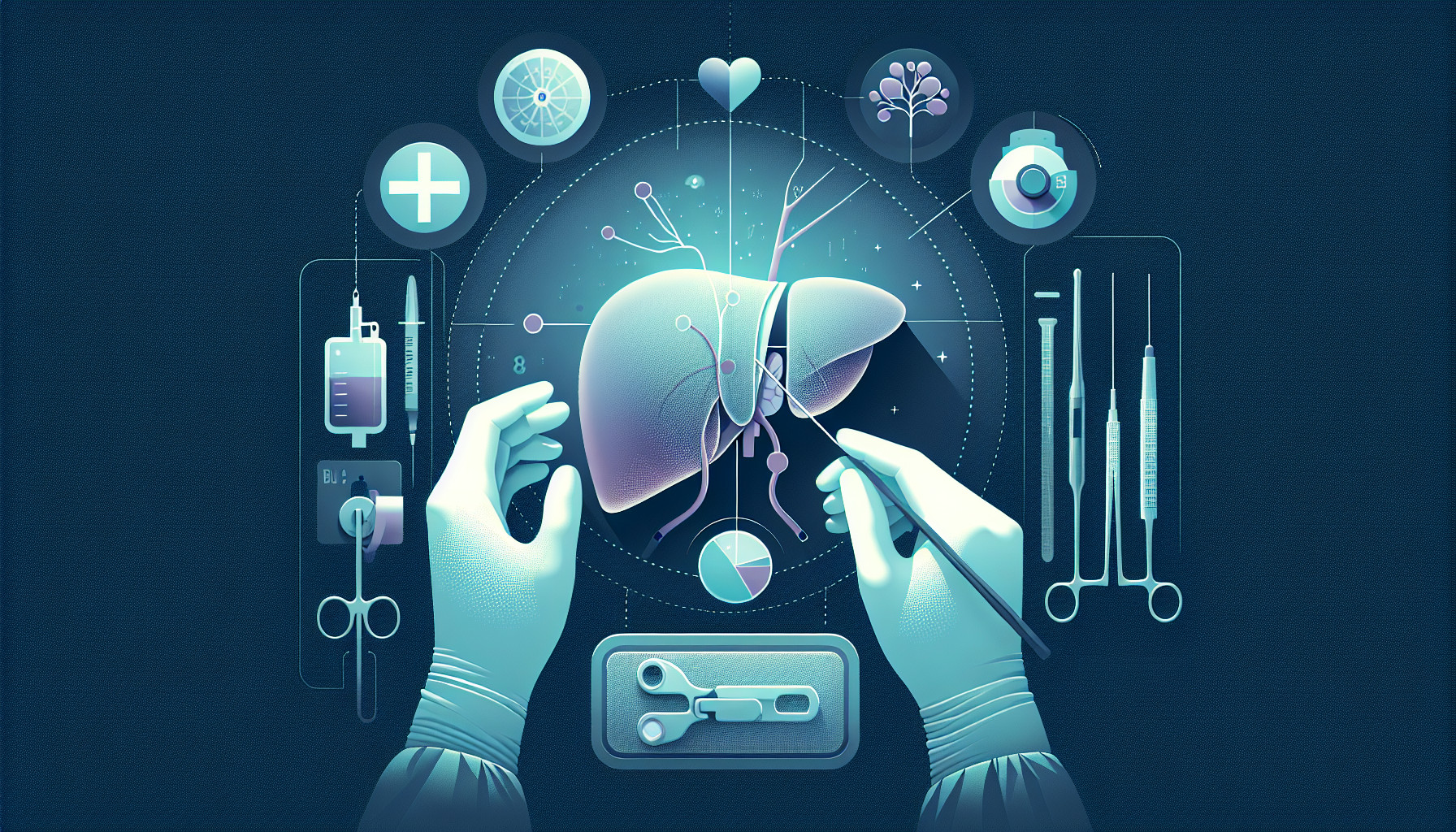Our Summary
This research paper is about a study of child liver transplants in Pakistan. The team examined cases from 2012 to 2019 at Shifa International Hospital, in Islamabad. They looked at why the children needed liver transplants, how many survived, and what problems arose.
They found that 45 children, mostly around 9 years old, had liver transplants. Most of them were suffering from unexplained liver disease or Wilson disease, which is a rare inherited disorder. Three-quarters of the patients had chronic liver disease while a quarter had acute liver failure. The right lobe of the liver was the most commonly transplanted part.
Survival rates after the operation were 77.8% after 30 days, 75.6% after a year, 73.3% after 3 years, and 60.6% after 5 years. The highest death rate, 33%, was found among patients with biliary atresia, a condition in infants in which the bile ducts outside and inside the liver are scarred and blocked. Causes of death included blood clots in the lungs, infections, surgical complications, and sudden kidney failure. The average survival period was around 89 months.
The researchers concluded that liver transplants from living donors have given children disease-free survival. They believe survival rates could be improved by better nutrition and by anticipating and managing complications after the operation.
FAQs
- What were the main reasons for children in Pakistan needing liver transplants, as per the study?
- What were the survival rates after the operation and what were the common causes of death post-operation?
- What were the recommendations by the researchers to improve the survival rates after pediatric liver transplants?
Doctor’s Tip
One helpful tip a doctor might tell a patient about pediatric liver transplant is to closely follow the post-transplant care plan provided by the medical team. This may include taking immunosuppressant medications as prescribed, attending regular follow-up appointments, maintaining a healthy diet, and avoiding activities or substances that may harm the new liver. By following these guidelines, patients can help ensure the success of their liver transplant and improve their long-term outcomes.
Suitable For
Pediatric liver transplants are typically recommended for children who are suffering from chronic liver disease, acute liver failure, or rare inherited disorders such as Wilson disease. Children with conditions such as biliary atresia, where the bile ducts are blocked, may also require a liver transplant. In some cases, children may need a liver transplant due to unexplained liver disease.
The study mentioned above found that children with biliary atresia had the highest death rate following a liver transplant, highlighting the importance of early detection and intervention in such cases. It is important for healthcare providers to closely monitor children with liver disease and consider a liver transplant when other treatments are not effective.
Overall, pediatric liver transplants can be life-saving for children with severe liver disease. However, it is important for healthcare providers to carefully evaluate each case and consider the potential risks and benefits of a liver transplant for the individual child. With advancements in medical technology and improved post-operative care, the survival rates for pediatric liver transplants continue to improve.
Timeline
Before a pediatric liver transplant, a child may experience symptoms of chronic liver disease or acute liver failure, such as jaundice, fatigue, abdominal pain, and poor growth. They may undergo various tests and treatments to manage their condition, including medications, dietary changes, and liver biopsies.
After a pediatric liver transplant, the child will undergo a period of recovery in the hospital, typically lasting a few weeks. They will be closely monitored for signs of rejection or complications, and will need to take immunosuppressant medications to prevent their body from rejecting the new liver. Physical therapy and rehabilitation may also be needed to help the child regain strength and function.
In the months and years following the transplant, the child will continue to have regular follow-up appointments with their medical team to monitor their liver function, adjust medications as needed, and address any issues that arise. They may also need to make lifestyle changes, such as maintaining a healthy diet and avoiding certain medications that can harm the liver.
Overall, pediatric liver transplant can be a life-saving procedure for children with severe liver disease, but it requires lifelong care and monitoring to ensure the best possible outcome.
What to Ask Your Doctor
- What are the reasons a child may need a liver transplant?
- What is the success rate of pediatric liver transplants at your hospital?
- What are the risks and potential complications associated with pediatric liver transplants?
- How long is the recovery process after a pediatric liver transplant?
- How long does a child typically need to stay in the hospital after a liver transplant?
- What ongoing care and monitoring will be required after the transplant?
- Are there any lifestyle changes or restrictions that the child will need to follow post-transplant?
- How often will follow-up appointments be needed after the transplant?
- What are the signs of rejection that parents should watch out for in their child after the transplant?
- Are there any support groups or resources available for families going through pediatric liver transplants?
Reference
Authors: Aaraj S, Khan SA, Maroof F, Hussain SZ, Dar FS, Malik MI. Journal: Pediatr Transplant. 2024 Feb;28(1):e14634. doi: 10.1111/petr.14634. Epub 2023 Nov 7. PMID: 37936530
